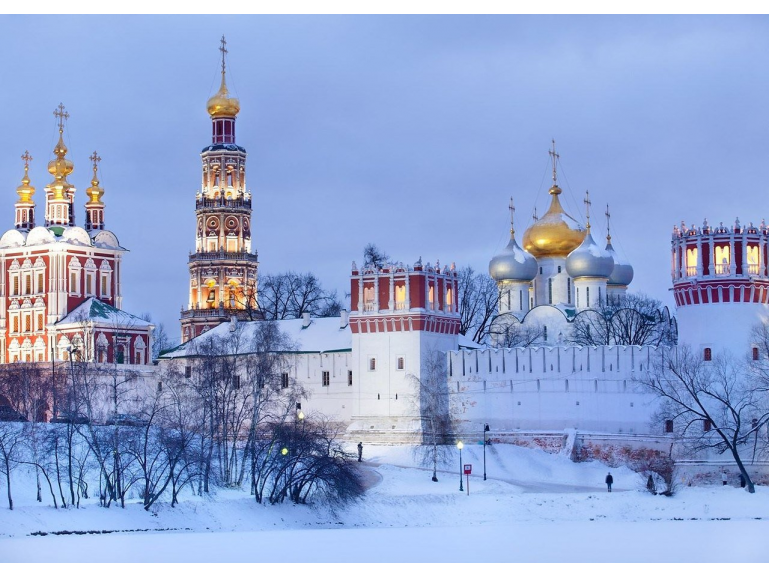24 january / 2024
Architectural Ensemble of the Novodevichy Convent
The Novodevichy Convent is one of the most interesting places in Moscow and one of the best-preserved and most beautiful monasteries located at the Russian capital. It was founded in 1524, and since the 17th century, it has undergone no significant changes, becoming the perfect example of the Moscow Baroque.
It is a complex of walled religious buildings that dates back to the early 16th century, located in the southwest of the capital, near the Moskva River. The Convent was founded by the Grand Duke Vasiliy III and eventually integrated into the defense system of the city.
The ensemble consists of 14 buildings, including 8 cathedrals (a shrine, 4 churches, a belfry with the Barlaam and Josaphat church and two chapels) and a number of residential and service buildings. The monastery is sometimes called “the Moscow Kremlin in miniature”. Its oldest building is a stone cathedral dedicated to the Icon of the Mother God of Smolensk built in 1524–1525 after the fashion of the Assumption Cathedral in the Moscow Kremlin.
The Novodevichy Convent is closely linked to political, cultural and religious history of Russia. It survived many difficult periods of the Russian history, including the Time of Trouble, the Napoleon invasion and the Great Patriotic War.
A truly remarkable story happened in 1812, when Napoleon’s army tried to blow up the convent, but the nuns managed to save it from destruction.
After the Revolution of 1917, the Convent became the Museum of Women’s Emancipation. Later it became the official residence of Metropolitan Kruitsky and Kolomensky of the Orthodox Church. Nowadays, the complex of Novodevichy Convent is open for visitors.
It is a complex of walled religious buildings that dates back to the early 16th century, located in the southwest of the capital, near the Moskva River. The Convent was founded by the Grand Duke Vasiliy III and eventually integrated into the defense system of the city.
The ensemble consists of 14 buildings, including 8 cathedrals (a shrine, 4 churches, a belfry with the Barlaam and Josaphat church and two chapels) and a number of residential and service buildings. The monastery is sometimes called “the Moscow Kremlin in miniature”. Its oldest building is a stone cathedral dedicated to the Icon of the Mother God of Smolensk built in 1524–1525 after the fashion of the Assumption Cathedral in the Moscow Kremlin.
The Novodevichy Convent is closely linked to political, cultural and religious history of Russia. It survived many difficult periods of the Russian history, including the Time of Trouble, the Napoleon invasion and the Great Patriotic War.
A truly remarkable story happened in 1812, when Napoleon’s army tried to blow up the convent, but the nuns managed to save it from destruction.
After the Revolution of 1917, the Convent became the Museum of Women’s Emancipation. Later it became the official residence of Metropolitan Kruitsky and Kolomensky of the Orthodox Church. Nowadays, the complex of Novodevichy Convent is open for visitors.





